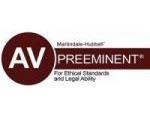
Talcum powder, also known as talc, has a very muddied medical history. Since the 1930s, people have been skeptical to use it as a self-care product at home. A 1975 study discovered that a whopping 75% of ovarian tumors had talc particles in them. Finally, in 2020, self-care titan Johnson & Johnson discontinued the sale of their talcum powder products.
This may leave you wondering what exactly is the problem with talc?
What Is Talcum Powder Used For?
In the early 20th century, talcum powder, made from mashing the soft clay mineral talc, was pioneered. Talc is very soft and absorbs moisture well, so a powder for personal care would have many uses.
By the late 20th century, most personal care manufacturers, including Johnson & Johnson, were on the talcum powder train. But unfortunately for them, research on the safety of talcum powder was showing deadly links to disease. Even though they knew this, they continued to sell these dangerous products.
Today, we know that talcum powder is causally linked to tumorous growths and cancers, especially ovarian. Because of this, many industry-leading brands have decided to discontinue its use. This hasn’t stopped the billions of dollars in payouts from arising as a consequence. These verdicts have been steep for those affected by talcum powder’s cancerous side-effects.
The Dangers of Talc
Various studies over the past few decades have revealed the many dangers of using talc. Here are a few of the most notable ones through the years:
- 1971 – The British Journal of Obstetrics and Gynecology discovered talc in 75% of ovarian tumors.
- 1982 – The Cramer Study found that women who used talcum powder for feminine hygiene use had an increased risk of ovarian cancer.
- 1992 – A study on rodents conducted by the Federal National Toxicology Program found “conclusive evidence” of carcinogens (poison) in talc products.
- 2011 – Cramer produced a case-control study that confirmed previous suspicions, this time showing a two-thirds increase in ovarian cancer in women who used talc products.
The results have been conclusive and repetitive. Talcum powder used for feminine care purposes comes with a staggering increased risk of cancer among women.
Talcum Powder Lawsuits
Manufacturers and distributors of talcum powder products have come under fire in the last several decades. Consequently, many lawsuits have been filed against these companies.
Billions of dollars have been awarded by jury to plaintiffs in regard to ovarian cancer cases. At least four class-action lawsuits have been filed against Johnson & Johnson alone. At Johnson & Johnson, over $4 billion is set aside solely for the over 27,000 lawsuits still pending against them. However, these cases are wrapping up, and now time is running out to file a claim.
Individuals who qualify for filing these lawsuits are women who have used talcum powder products daily before developing ovarian cancer. Currently, qualifying products include:
- Gold Bond Extra Strength Body Powder
- Shower to Shower
- Gold Bond Body Powder
- Johnson & Johnson’s Baby Powder
- Gold Bond No Mess Powder Spray
There are certain criteria that you must meet in order to pursue a talc lawsuit:
- Minimum 4 years of genital talc use
- Diagnosed with ovarian cancer or invasive fallopian tube cancer
- Received diagnosis when 21-80 years old
- Diagnosed after the year 2005
Do You Have Cancer after Using Talcum Powder? Contact Brooks Law Group.
If you meet the criteria above, you may qualify for compensation. Time really is running out to file your claim before the courts stop allowing them. Call us today at 1-800-LAW-3030, or contact us online to learn more. We’ll talk with you to see if you qualify and how we can help.
Don’t wait, call us today!













